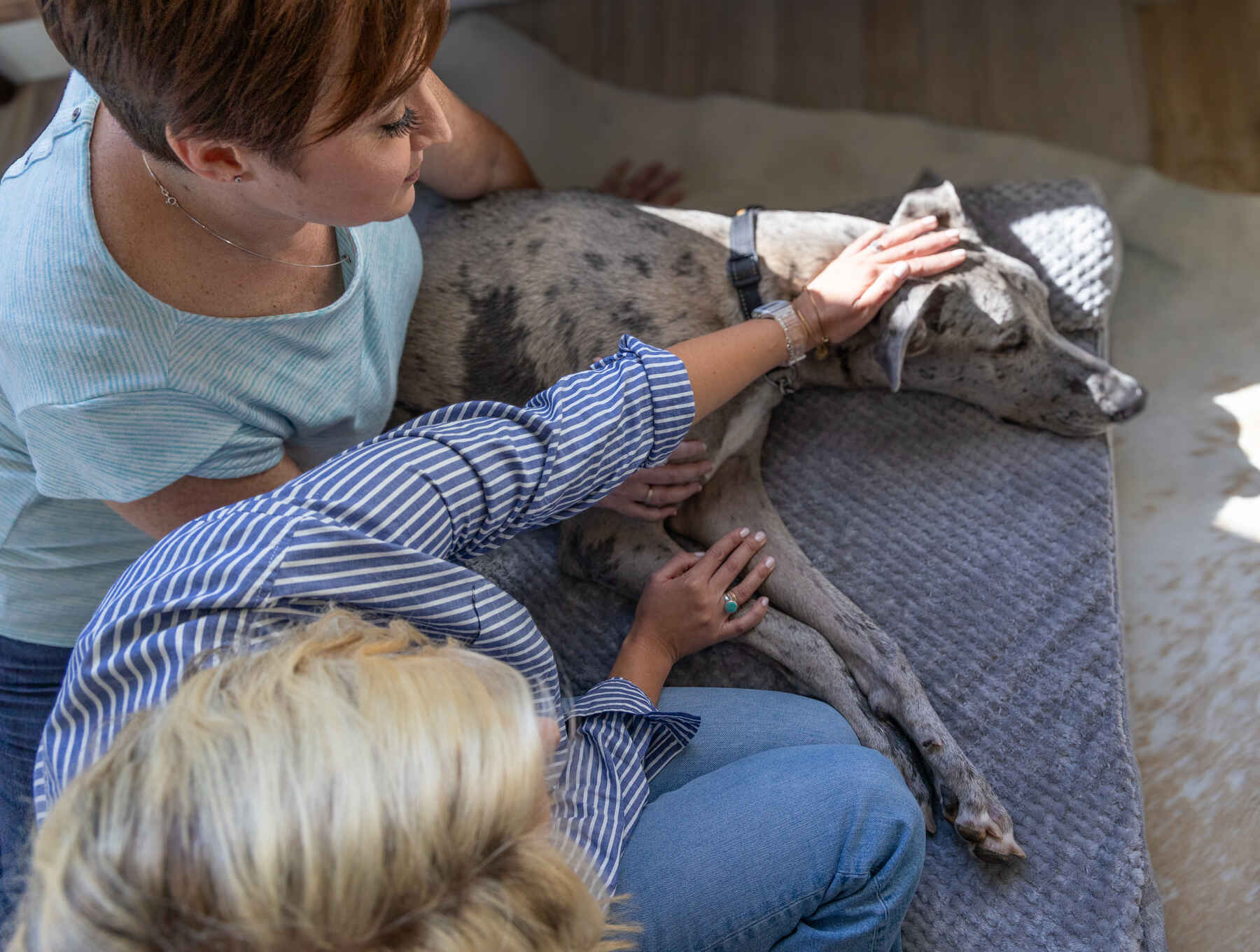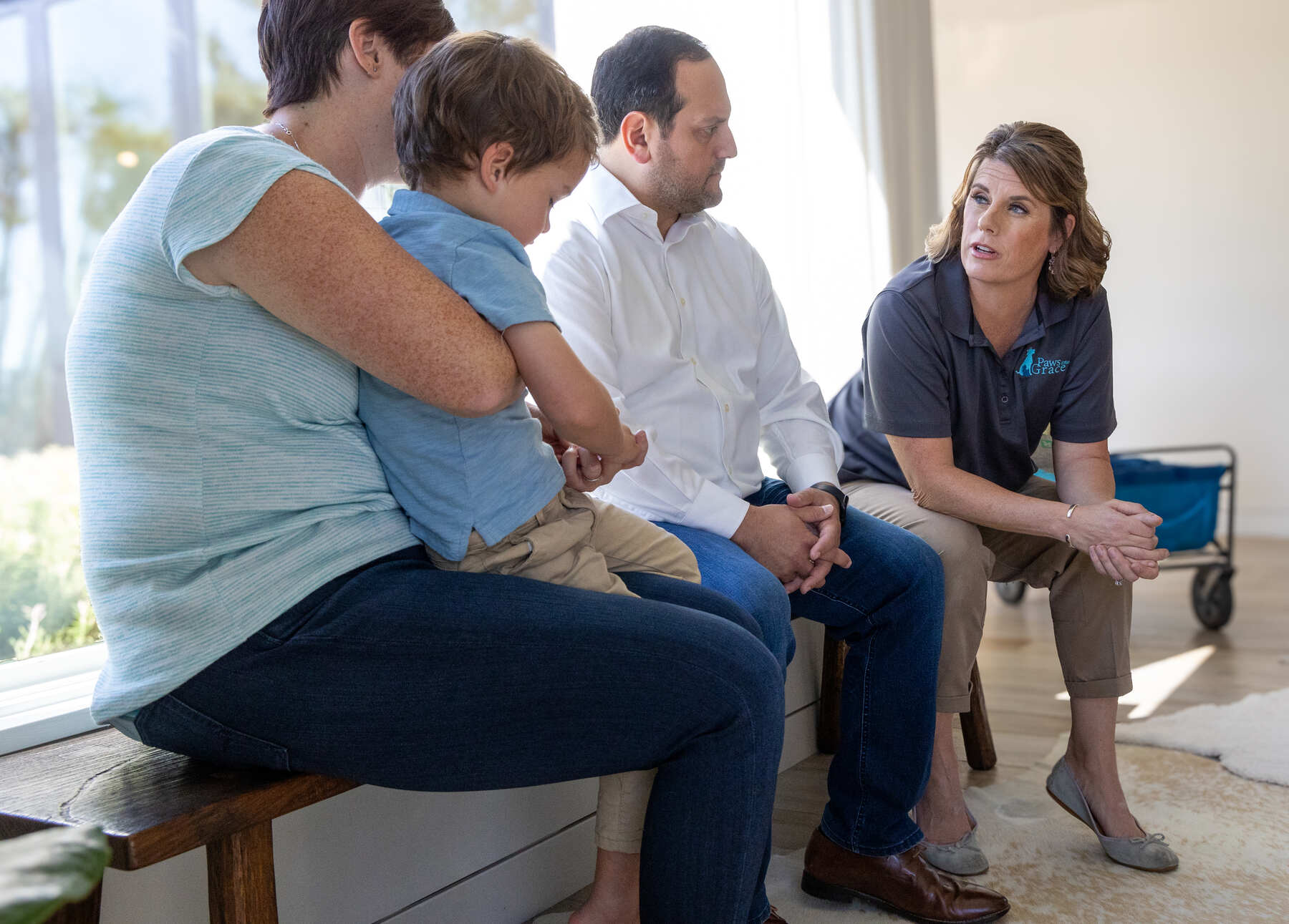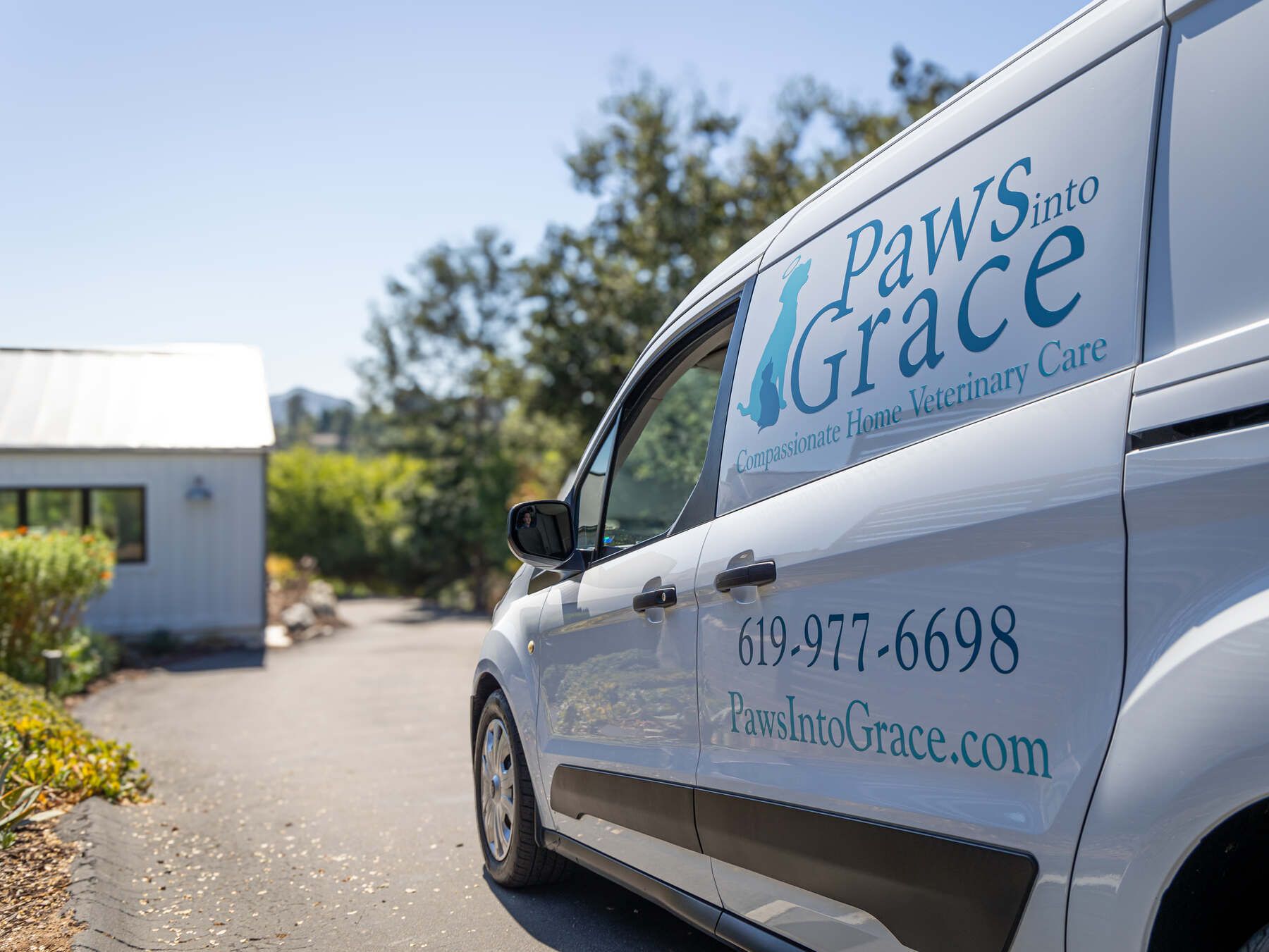When a pet dies at home, many pet parents find themselves overwhelmed with grief and unsure about the immediate steps they need to take, leading to additional stress. Here’s a simple guide to “what to do if your dog dies at home naturally” so you can properly handle your pet’s remains and make the most practical, time-sensitive decisions while dealing with your pet’s passing.
What to Do if Your Dog Dies at Home
If your pet has passed away, begin by confirming their death and contact your veterinarian for guidance. They can help and provide options for handling your pet’s remains. After confirming your dog’s death, you’ll need to carefully position and preserve their body for burial, communicate with family members about the loss, consider various memorial options, and reach out to grief counselors to help process this significant loss.

It’s not easy losing a beloved pet, especially in the middle of the night when you’re least expecting it. While saying goodbye can be overwhelming, there are things you can do when your dog passes away at home in the unexpected hours of the night.
1. Evaluate the Situation
The first thing you should do is to check if your dog has truly passed away. It may feel strange at first, yet it’s possible that your pet may only have shallow breathing or still be sleeping.
- Check if your dog’s chest is rising and falling. Even the slightest movement can mean your pet is still breathing.
- Check for a pulse or heartbeat under your dog’s chest near the armpit. Your fingertips should easily feel a heartbeat.
- Monitor corneal reflex. A deceased pet’s eyes should not respond when you touch the eyeball.
2. Call Your Veterinarian
Understandably, you’ll doubt whether your beloved pet has passed, which is why you should contact your vet for confirmation and guidance through this process.
- When your pet dies at home, contact your veterinarian’s office as soon as possible to discuss next steps.
- Ask about available transportation options and whether they offer home pickup services, as moving your pet can be both emotionally and physically challenging.
- Document any specific details about your pet’s final moments that might be relevant for the vet to know, including the time and any notable circumstances.
3. Preserve Your Pet’s Body
Your dog will begin to decompose and emit an odor immediately after death. Here’s how you can safely and respectfully preserve your dog’s body for cremation.
- Clean the body: A deceased animal may release bodily fluids and waste. Wear gloves as you clean the parts using a towel.
- Position your pet’s body: Your dog’s muscles will become rigid around three hours after death. When rigor mortis happens, the joints will stiffen, which may make it difficult to position your dog. Position your dog’s body in a curled-up position right away before storing the body in a cool place.
- Wrap the remains: Place a towel or potty pad under your pet’s tail and mouth. You should also use a blanket or bed sheet to wrap the remains. Then, you can consider keeping the body in a plastic bag.
- Store the body: Store your dog’s remains in a freezer or a cooler with ice.
4. Explain the Situation to Your Loved Ones
The dreadful situation of your dog’s passing may happen when you’re alone at home or while other people are sleeping. It’s best to wait until morning when your thoughts are collected and you can explain what happened in a clear and concise way.
- Gather family members together in a quiet, comfortable space and share the news with gentle honesty.
- Allow each loved one to process the news in their own way, understanding that different people, especially children, may express grief differently.
- Create a safe space for questions and emotions, and make sure everyone feels supported in expressing their feelings about this loss.
5. Consider Options for Handling Your Pet’s Remains
After securing your pet’s body and consulting with the vet’s office, it’s time to decide what to do with your dog’s remains.
- Individual cremation: You will receive your pet’s ashes back in an urn you can keep at home or bury at a pet cemetery.
- Communal cremation: You will not receive the pet’s ashes back. Instead, the ashes are spread at sea with the help of our partners, Oceans of Love.
- Memorial items: Once you receive your dog’s ashes, you can use a bit of the ash in personalized jewelry, paperweights, marbles, keychains, or ornaments.
6. Contact Someone for Support and Allow Yourself to Grieve
At this hour, it helps to remember and celebrate your dog’s life in a meaningful way.
- Begin by reaching out to a friend or a family member who understands the bond you shared with your fur baby and can offer help during this difficult time.
- Consider joining a pet loss support group or speaking with a counselor who specializes in pet bereavement to help process your grief.
- Honor your feelings and give yourself permission to grieve, understanding that the loss of a pet can be as impactful as any other significant loss.
Related Questions
How to Dispose of a Dead Pet Dog?
For disposing of a dead pet dog, wrap the remains carefully in a blanket or towel to contain any bodily fluids. Then, either bury it in your backyard (if local laws permit) or take it to a San Diego pet cemetery When choosing a burial, you can coordinate with a veterinarian’s office to help with the planning of cremation, burial, and memorial with respect to your pet’s life.
What Is the Process After a Dog Dies?
When a pet dies at home, place the remains in a cool, dry place while you decide on burial or cremation options, and contact your vet or pet funeral service for guidance. The next steps typically involve either arranging for the pickup of your dog’s remains or preparing for a home burial.
Who Should I Call to Pick Up a Dead Dog?
When your dog passes at home and you’re unable or uncomfortable transporting them, you can call our facility so we can send a driver to your home. Our compassionate drivers know how to handle deceased animals with care and gracefully move them to our facility for cremation.
Can Dogs Pass Away in Their Sleep?
Yes, some pets can peacefully and naturally pass away while sleeping. However, this won’t happen in most cases, so ailing or severely injured pets may need euthanasia to assist in the transition.
What Should I Do With My Other Pets When a Pet Dies?
When there are other pets at home, allow them to smell or get close to their friend one last time. They may act aloof initially, yet they will know and eventually understand what happened.
Conclusion
Being prepared and knowing exactly what steps to take when your pet dies at home can provide a sense of clarity and direction during this difficult time. Having a clear process in place helps meet your financial and emotional needs. This can give you the space to honor your companion’s memory while taking care of necessary steps after your fur baby’s passing.


